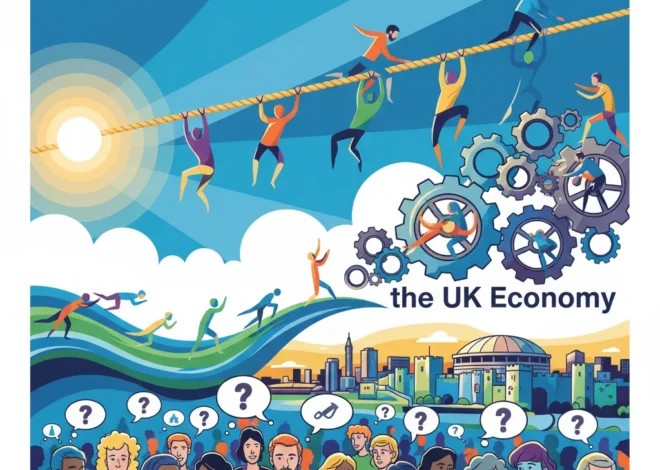
Beyond the Ivory Tower: Are We Ignoring the Real Experts in Financial Reform?
The global financial system is a marvel of human ingenuity—a complex, interconnected network that fuels economies, facilitates growth, and enables global commerce. Yet, it is also notoriously fragile. Since the 2008 financial crisis, a perennial question has echoed through the halls of power, academic institutions, and media outlets: “How do we fix finance?” The resulting decade and a half has seen a tidal wave of new regulations, theoretical models, and high-level policy debates. But are we missing a crucial piece of the puzzle?
In a concise but powerful letter to the Financial Times, Jack Helfenstein of Horgenberg, Switzerland, posed this very question. He observed that the conversation about reforming the world of finance is overwhelmingly dominated by a specific cast of characters: academics, regulators, and politicians. Conspicuously absent, he argues, are the voices of those on the “frontline”—the traders, salespeople, and investment bankers whose daily decisions constitute the market itself. This isn’t a call for deregulation, but rather a plea for a more holistic and practical approach. It suggests that to build a more resilient financial system, we must bridge the vast chasm between theoretical policy and practical reality.
This post explores that chasm. We will delve into why the frontline perspective is so often sidelined, what unique insights these professionals possess, and how a new model of collaboration could shape a more stable and innovative future for the global economy.
The Echo Chamber of Financial Reform
When a crisis hits the stock market or the banking sector, the response is typically a top-down affair. Governments and international bodies convene panels of esteemed experts. Economists publish papers, legal scholars draft frameworks, and regulators design intricate rulesets. This approach is born from necessity and expertise; the people shaping policy are masters of macroeconomic theory and public administration.
The post-2008 era is a prime example. Landmark legislation like the Dodd-Frank Act in the United States was a monumental effort to de-risk the financial system. It involved thousands of pages of rules governing everything from capital requirements to derivatives trading. According to a report from the Mercatus Center at George Mason University, the act added tens of thousands of new regulatory restrictions and has been criticized for its sheer complexity and compliance costs. While well-intentioned, these top-down solutions are often designed in a relative vacuum, far from the frantic energy of a trading floor or the nuanced negotiations of a capital raise.
The problem with this “ivory tower” approach is that it can lead to policies that are theoretically sound but practically flawed. A rule designed to curb excessive risk-taking might, in practice, dry up market liquidity, making it harder for businesses to hedge risks or for pension funds to execute large trades efficiently. A compliance requirement intended to increase transparency could impose such a heavy burden that it stifles innovation, particularly for smaller firms in the burgeoning financial technology space. The map, however detailed, is not the territory.
The View from the Trading Floor: What Frontline Professionals Know
To dismiss the insights of financial practitioners as inherently self-serving is to ignore a treasure trove of granular, real-world knowledge. These individuals operate at the sharp end of the market, where theoretical models collide with human psychology, technological limitations, and the messy reality of global capital flows. Their expertise is not in broad economics, but in the micro-mechanics of the market.
Consider the distinct perspectives they offer:
- Traders: They possess an intuitive understanding of market liquidity—the lifeblood of the financial system. They know how specific regulations will affect bid-ask spreads, how algorithmic trading systems will interact under stress, and where hidden risks are likely to accumulate. Their perspective is crucial for designing rules that enhance stability without inadvertently seizing up the gears of the market.
- Investment Bankers: These professionals are on the front lines of capital formation. They understand the practical hurdles companies face when trying to raise capital for expansion, research, or hiring. They can provide direct feedback on how securities regulations or M&A rules either facilitate or hinder economic growth and long-term investing.
- Fintech Innovators: The new frontline is in fintech. Developers and entrepreneurs building on blockchain or creating new payment systems have an unparalleled understanding of both the potential and the pitfalls of new technology. They know where legacy regulations are creating friction and where new frameworks are needed to manage novel risks without killing innovation.
To illustrate this disconnect, here is a comparison of how different stakeholders might view the same issue:
| Area of Concern | Regulator’s Perspective (Top-Down) | Frontline Professional’s Perspective (Bottom-Up) |
|---|---|---|
| Market Volatility | Focus on systemic risk. Propose broad measures like circuit breakers or increased capital buffers to absorb shocks. | Focus on liquidity dynamics. Analyze how specific rules might cause market makers to pull back, exacerbating a flash crash. |
| New Financial Products | View with suspicion. Focus on potential for consumer harm or hidden risks. Default to a precautionary principle, often leading to slow approval. | Focus on client demand and utility. See the product as a solution to a specific hedging or investment need. Can identify unintended consequences of a ban. |
| Compliance & Reporting | More data is better. Mandate extensive reporting to enhance transparency and oversight. | Focus on operational cost and efficiency. Question whether the collected data is useful and how the reporting burden impacts competitiveness and client service. |
Hollywood's New Kingmakers: Inside the Saudi-Backed Bid to Forge a Media Supergiant
Why Are These Voices Sidelined?
If the value of this frontline perspective is so clear, why is it consistently marginalized in policy debates? The reasons are complex and deeply ingrained in the post-crisis financial landscape.
- The Trust Deficit: The most significant barrier is the perception of bias. Any recommendation from a trader or banker is immediately viewed through a lens of self-interest. A call for simpler regulation is often heard as a call for weaker regulation, a desire to return to the “wild west” environment that led to past failures.
- Communication Gaps: The language of a quantitative trader and that of a legislative aide are worlds apart. It is incredibly difficult to translate the highly specialized, technical knowledge of market microstructures into the broad principles required for effective public policy.
- Lack of a Unified, Trusted Platform: While industry lobbying groups exist, their function is advocacy, which is often perceived as partisan. There is no neutral, respected forum—akin to an academic journal or a regulatory commission—where frontline professionals can contribute their practical expertise in a way that is seen as constructive rather than self-serving.
This exclusion creates a dangerous feedback loop. Practitioners, feeling that their practical concerns are ignored, may become cynical about regulation and focus on finding loopholes. Regulators, not receiving constructive, practical feedback, may double down on prescriptive, broad-stroke rules, leading to even more unintended consequences.
Beyond the Headlines: The Epstein Files and the New Era of Financial Accountability
A New Blueprint: Forging a Collaborative Future
Breaking this cycle requires moving beyond the current paradigm and building new channels for communication and collaboration. The goal is not to supplant the role of regulators but to augment their theoretical expertise with the invaluable, on-the-ground intelligence of those who live and breathe the markets every day. Several models offer a path forward:
- Formalized, Diverse Advisory Councils: Regulators should establish standing advisory councils for major policy initiatives. Crucially, these councils must be diverse, including not just chief executives and lobbyists, but also senior traders, investment managers, compliance officers, and fintech developers. By placing them in the same room as academics and consumer advocates, you create a dynamic where ideas can be pressure-tested from all angles.
- Expanding “Regulatory Sandboxes”: The concept of a regulatory sandbox, where fintech firms can test innovative products in a controlled environment with regulatory oversight, is a proven success. As noted by the International Monetary Fund, these sandboxes promote innovation while managing risk. This model should be expanded and applied more broadly, creating a space for regulators and practitioners to collaborate on developing agile frameworks for emerging areas like decentralized finance (DeFi) and artificial intelligence in trading.
- Data-Driven, Iterative Rulemaking: Instead of crafting monolithic, unchanging regulations, a more modern approach would be to treat policymaking as an iterative process. Regulators could use anonymized market data to assess the real-time impact of a new rule, with a formal feedback loop for practitioners to help interpret the data and identify anomalies that a purely quantitative view might miss.
The rise of financial technology makes this collaboration more urgent than ever. The speed at which technologies like blockchain and AI are evolving is far faster than traditional legislative cycles. The only way for regulation to keep pace is to be in constant dialogue with the innovators who are building this new financial architecture.
Conclusion: From an Echo Chamber to a Conversation
Jack Helfenstein’s letter serves as a critical reminder: the quest to build a better, safer financial system cannot succeed from the top down alone. The system is not a machine to be engineered, but a complex, adaptive ecosystem of human actors. To ignore the knowledge of those most intimately familiar with that ecosystem is a strategic error.
Including the voices of the frontline is not about capitulating to industry interests. It is about making regulation smarter, more effective, and more resilient. It’s about ensuring that the rules designed to protect the global economy are not only well-intentioned but also well-informed. By fostering a genuine, transparent, and structured dialogue between policymakers and practitioners, we can move beyond the echo chamber and begin the vital work of building a financial future that is both stable and dynamic.

